by Chelsea DeWeese
Frosted sagebrush. Steaming geysers. Bison covered in snow. These are just some of the images that come to mind when one thinks about photographing Yellowstone in winter. This forgotten season works its magic, but figuring out how to photograph it correctly can present a challenge.
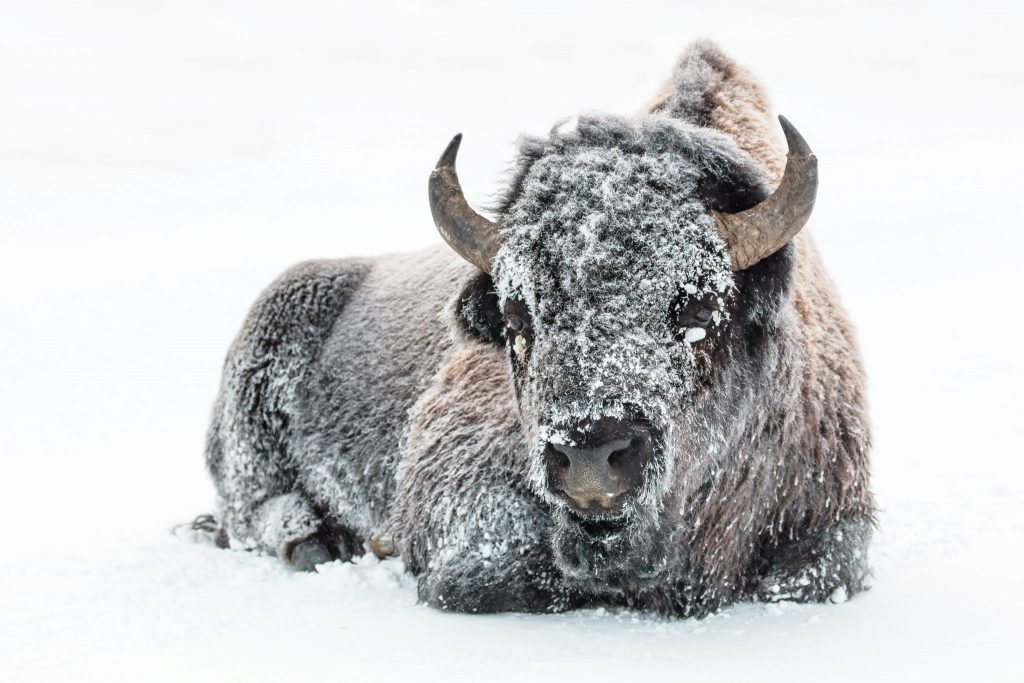
NPS / Jacob W. Frank
Yellowstone’s cold weather takes its toll on people and equipment. Terry Donnelly, who has taught photography courses for the Yellowstone Forever Institute, offers some suggestions. “Interestingly, the most important winter equipment is not for keeping the camera functioning, but to keep the photographer functioning in polar conditions,” he says. “Most modern cameras are highly operational in winter with little or no modification.”
In other words: photographers should take care of themselves first, and consider their equipment second. To achieve this, Donnelly suggests preparing mentally and physically to stand outside for hours in sub-zero conditions to capture the perfect image. Food, water, warm layers, and snowshoes are essential. He recommends pairing liners with heavy gloves or socks and using hand and toe warmers to keep extremities functioning.
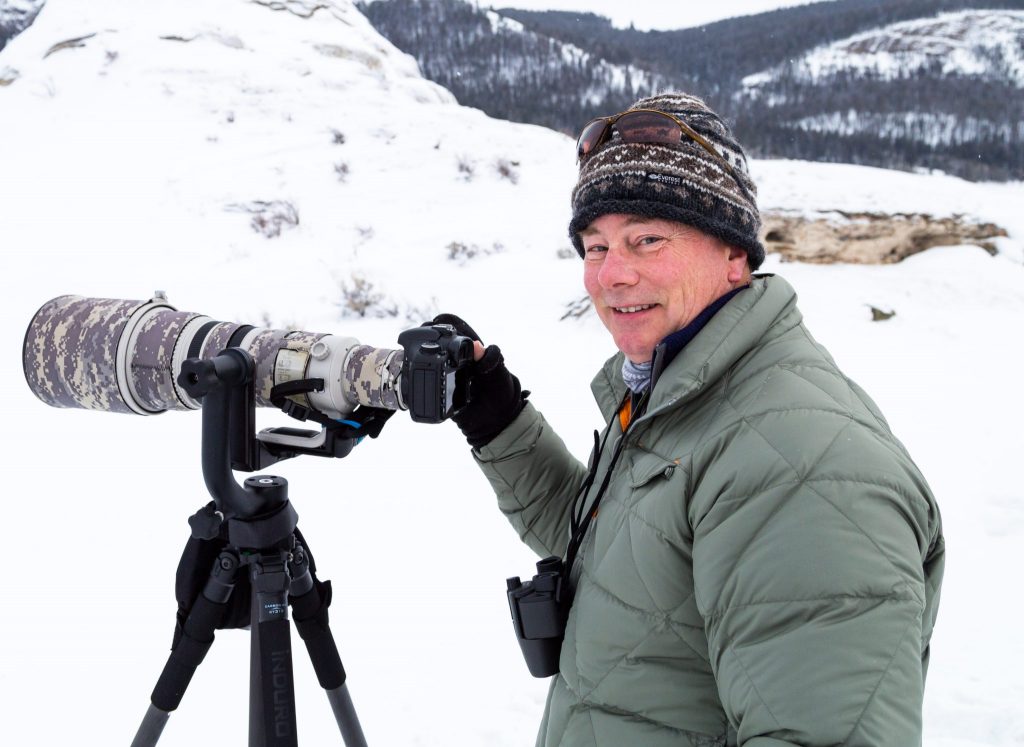
In terms of camera equipment, Donnelly suggests creating “snowshoes” for tripods by taping ski pole baskets 3″-4″ above the tripod’s leg tips, which prevents the tripod from sinking into snow. He also recommends bringing spare batteries and keeping them in a warm pocket, as battery life shortens in cold temperatures. He recommends replacing lens caps before going indoors and then allowing cameras to slowly warm to room temperature to avoid condensation. Resist the urge to blow snow or dust off lenses, as it will simply fog up front elements.
Above all, Donnelly suggests photographers take weather and lighting into account when planning an outing. “Plan your outdoor sessions modestly. You move more slowly in the winter, so you will cover less ground,” he says. “As always with photography, an acute awareness of light and its qualities is paramount. In using your winter light, try to find ways in which the light accentuates the drama and beauty of your subject.”
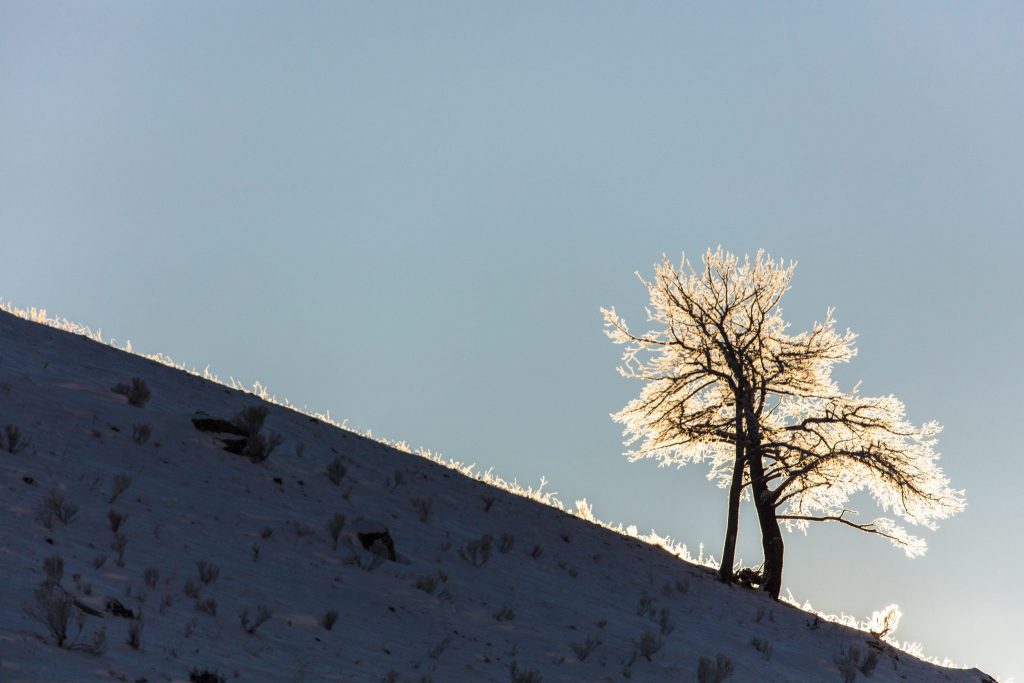
WINTER PHOTOGRAPHY TIPS
Whether attempting to capture evening alpenglow, the latticework of ice by a thermal pool, or starry skies, Donnelly offers these tips on how to get the perfect image:
Landscapes
“One big problem with snow is that it’s all white,” Donnelly says. “But if you photograph it with low-slanting light, the texture of the snow is accentuated. It’s no longer white but a pattern of light and shadows.” He suggests using morning and evening light, side lighting, blue skies, and clearing storms for contrast.
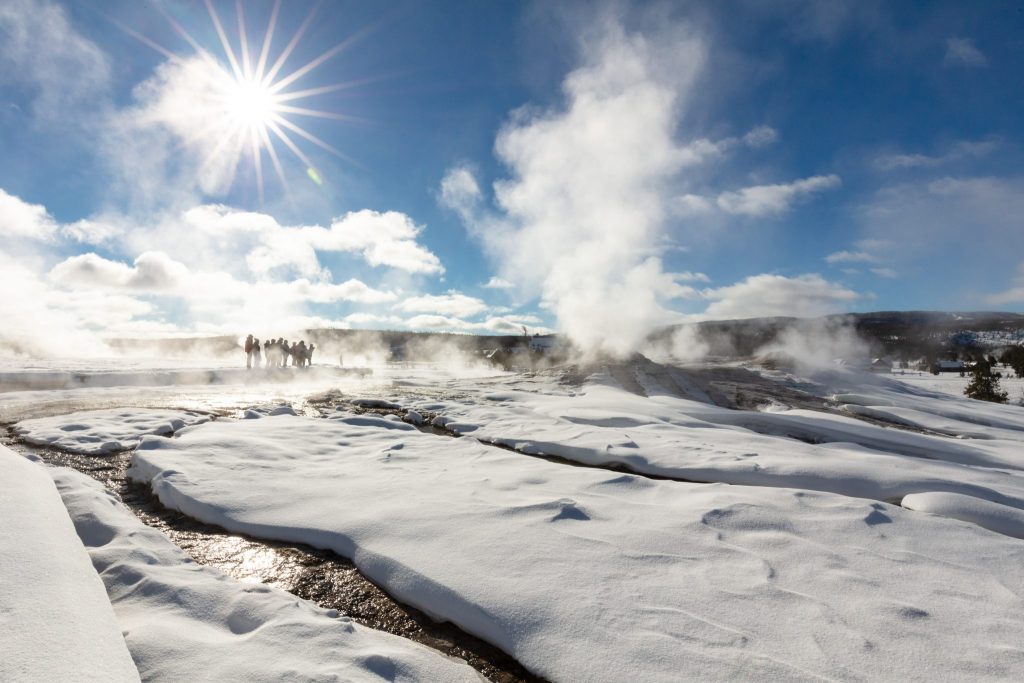
Thermal Features
“For me, photographing thermals is telling the story of fire and ice,” Donnelly says. He suggests pitting frosted trees against blue skies, capturing sunlight on rime ice, and positioning the sun directly behind thermal plumes. “It is often the effect of the thermal feature we are photographing and not the feature itself.”
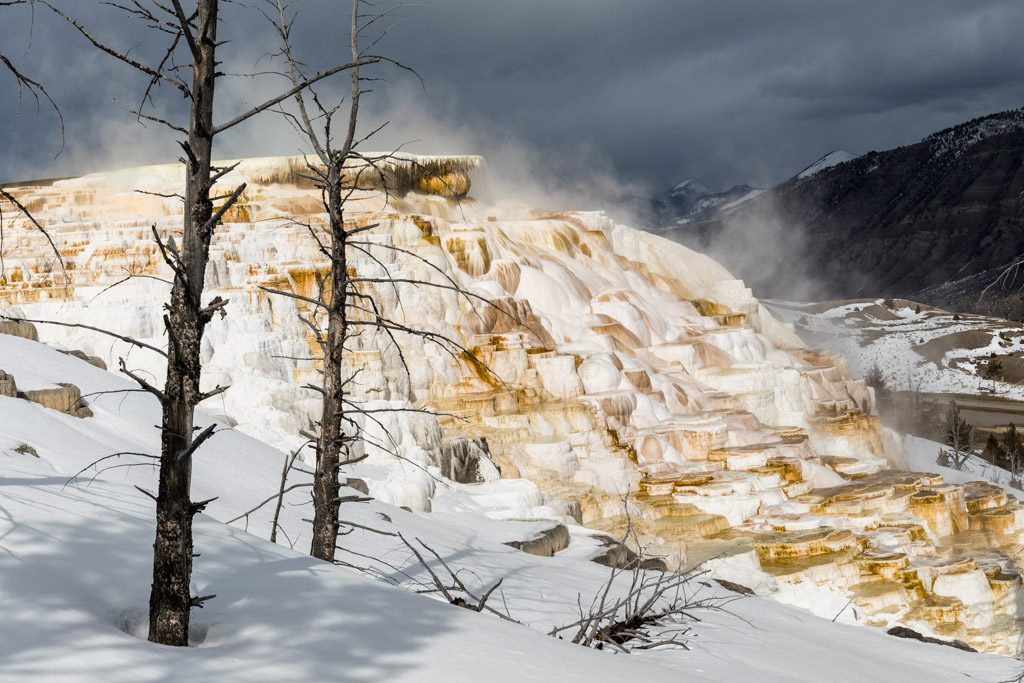
Dark Skies
“Take advantage of the long hours of winter darkness,” Donnelly suggests. Long, nighttime exposures in thermal basins result in otherworldly steam plumes. Cold, crisp skies make the perfect backdrop for starry nights. “Moonlight is also a great tool to use in winter,” Donnelly adds, “always surprisingly bright with a snowcovered landscape.”
Wildlife
Photographing wildlife in winter can be rewarding. Remember that animals are wild—and trying to survive the winter—so give them a wide berth. A minimum 500mm lens is recommended for close-ups. Park regulations require visitors to maintain a distance of at least 25 yards from all wildlife, and 100 yards from wolves and bears. If your actions cause an animal to change its behavior, you’re too close.
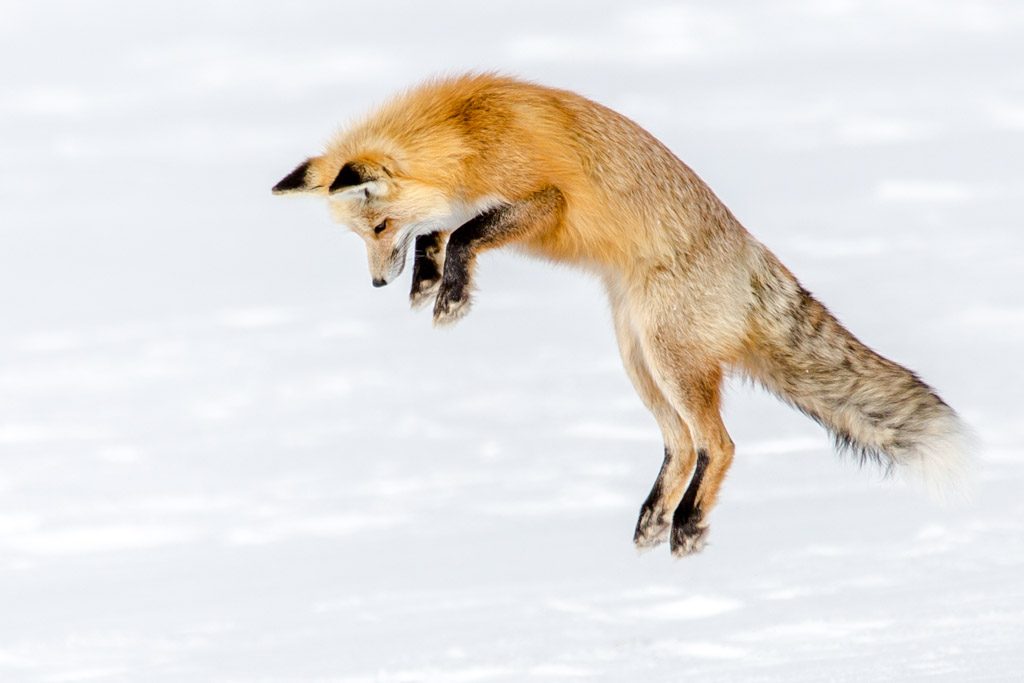
UPCOMING PHOTOGRAPHY PROGRAMS
The Yellowstone Forever Institute offers a variety of photography-related Field Seminars in Yellowstone National Park. Check out our upcoming programs.
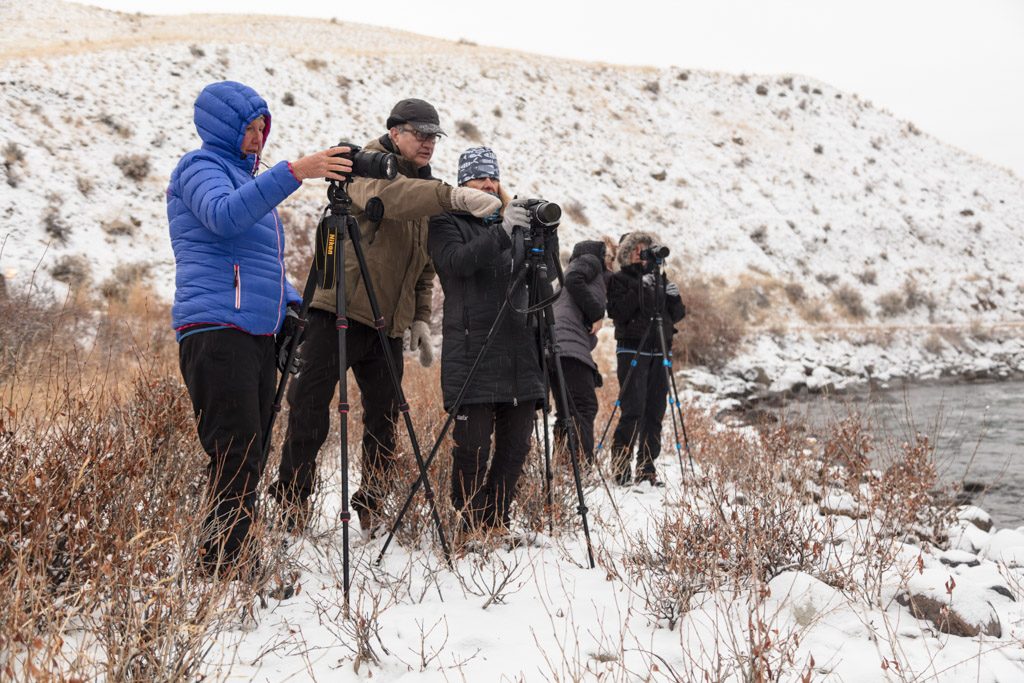
NPS / Jacob W. Frank
This article was originally published in the Winter 2015 issue of Yellowstone Quarterly.
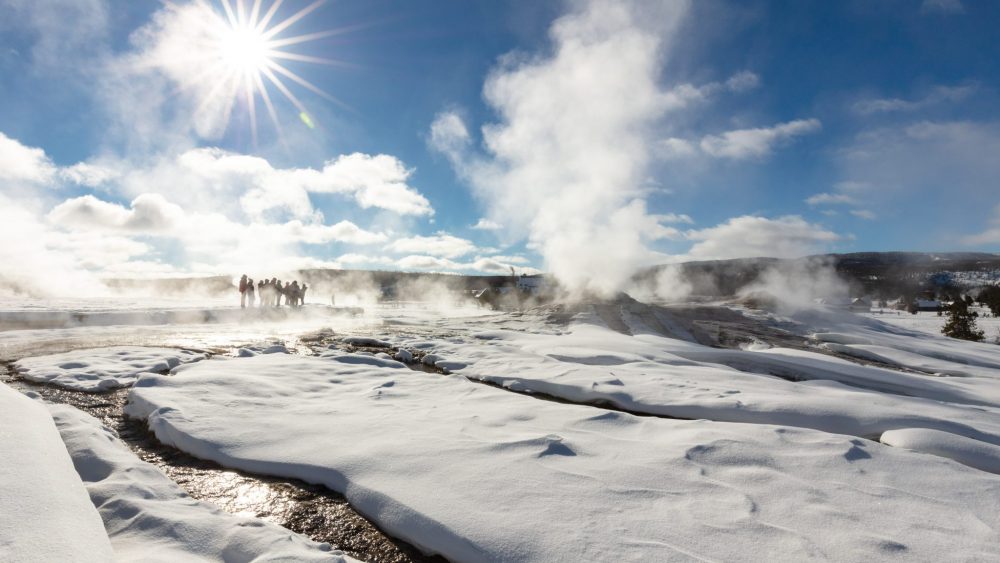
Comments are closed.